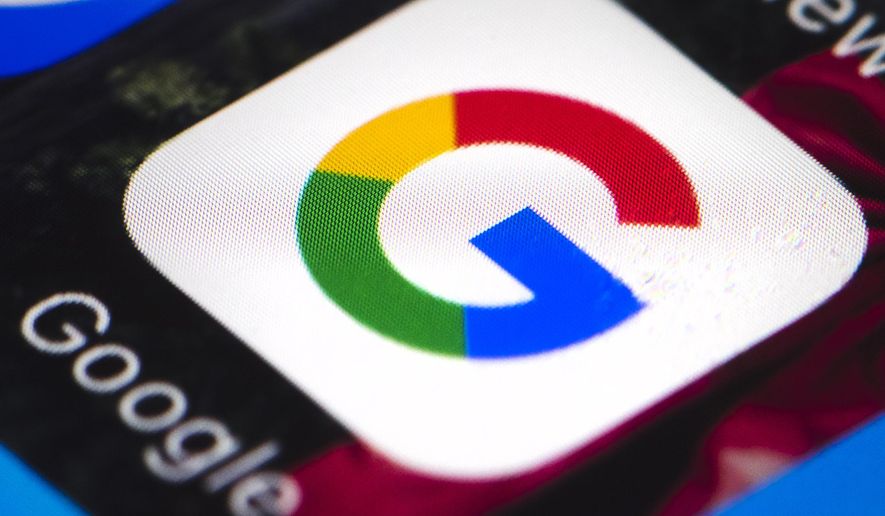The FBI knows that Jacob Travis Clark of Colorado was inside the prohibited environs of the U.S. Capitol on Jan. 6 exactly from 2:15 p.m., the riot’s approximate start time, to 3:25 p.m.
The snitch: Google technology.
Known for its indispensable search engine, the Silicon Valley giant also can track its Gmail account holders.
Law enforcement has used scores of ways to identify and track hundreds of Capitol invaders. In likely some of the most self-incriminating crimes ever, there are reams of social media videos and photos taken by the perpetrators themselves and posted for all to see.
Agents have used tipsters to generate names or found them on Twitter, Facebook and other networking platforms. They have submitted images for facial recognition technology. In one case, a suspect on parole went through the Capitol still wearing his GPS ankle bracelet monitor. The arrest toll so far stands at more than 400 people.
Mr. Clark was one of the more confrontational breachers toward police, based on an FBI affidavit filed to justify his arrest. At one hallway juncture, he challenged an officer to a fist fight. Both are seen on closed circuit television footage with their dukes up.
The affidavit recounts this exchange: “The officers state that they are just doing their jobs and CLARK screams ’So were the Nazis!’ CLARK then screams at the officers ’Stand down!’”
To confirm Mr. Clark’s identity, the FBI used rolling CCTV coverage and, based on a tip, compared his image to his Colorado driver’s license. A match.
Next, the FBI issued a search warrant to Google. Agents wanted to track a cellphone that contained his Gmail account.
“Google estimates device location using sources including GPS data and information about nearby Wi-Fi access points and Bluetooth beacons,” the affidavit states.
The court document then describes Google’s methodology: “This location data varies in its accuracy, depending on the source(s) of the data. As a result, Google assigns a ’maps display radius’ for each location data point. Thus, where Google estimates that its location data is accurate to within 10 meters, Google assigns a ’maps display radius’ of 10 meters to the location data point. Finally, Google reports that its ’maps display radius’ reflects the actual location of the covered device approximately 68% of the time. In this case, Google location data shows that a device associated with CLARK’s above listed emails was within the U.S. Capitol building from approximately 2:15 pm to 3:25 pm.”
He was arrested in Colorado on April 21 on six rioting charges, including trespassing, disorderly conduct and obstruction of justice. A judge released him without bail a week later with an order to stay away from Washington except for court appearances.
According to his court file in U.S. District Court in Washington, Mr. Clark has a preliminary hearing scheduled for September.
Mark Simon of Huntington Beach, California, is an example of how the FBI turned to its tech center and another advanced technique — biometrics — to secure his identity.
Based on anonymous witnesses who linked a social media video to Mr. Simon, agents procured his driver’s license photo and sent the two images to the FBI’s Operations Technology Division (OTD) in Quantico, Virginia.
OTD is home to a variety of high-tech crime-solving tools such as tactical communications, electronic surveillance (wiretaps) and facial recognition.
According to a court affidavit, the OTD reported that “both a computer algorithm and trained forensic examiner confirmed a match between the photo and the male and the above-referenced video.”
The government charged Mr. Simon with two counts of invading a restricted federal building.
• Rowan Scarborough can be reached at rscarborough@washingtontimes.com.




Please read our comment policy before commenting.